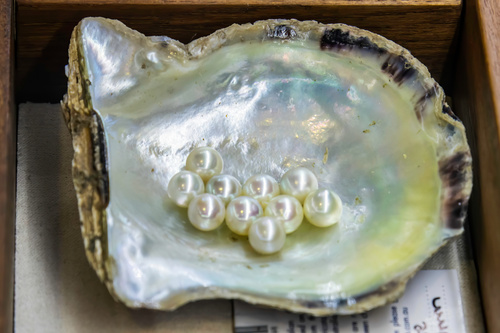From Their Wild and Wonderful Beginnings to Their One-of-a-Kind Shine, Pearls Are Truly Special Stones.
Pearls are unique among gems–the only precious stone created by a living being. This lends them a certain mystery and appeal that only deepens their natural beauty, and it’s no surprise that pearls have been highly valued throughout history. In this blog, we’ll explain a bit about where pearls come from and their historical importance. We’ll also discuss what makes pearls a great gift, and finally, talk about trending men’s pearl jewelry.
Where Do Pearls Come From?
You probably know the general answer to this: pearls are produced by oysters (and, rarely, other mollusks like clams and mussels). But there’s plenty more to it than that, so let’s dive into the details of how, why, and where pearls are formed.How Do Oysters Make Pearls?
The pearl production process is one of the most fascinating phenomena in nature, and it’s not nearly as pretty as the gems it results in. Oysters begin forming pearls when an irritant, such as a grain of sand, gets between an oyster’s body and its shell. Much like a scratchy shirt tag might bug us, the irritant bothers the oyster and in response, it begins forming a nacre around the object.The nacre (also referred to as mother-of-pearl) is the smooth, lustrous substance which will eventually become a pearl. It creates a layer between the oyster’s body and the irritant, so that the irritant no longer bothers the oyster. Over a period of months to years, the nacre forms a mature pearl large enough to be used in jewelry. Oysters can produce two to three pearls per lifetime.
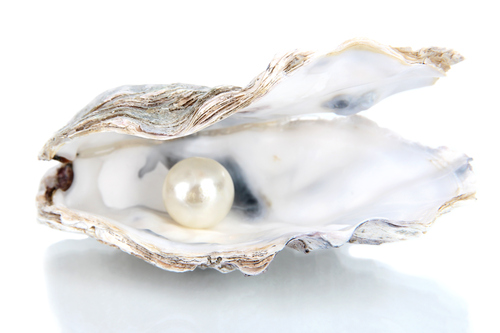
Types of Pearls
There are a variety of cultured pearls, classified by the region in which they are produced. They are made by different species of oyster, and may differ significantly in price and appearance.
Natural Pearls vs Cultured Pearls
There are two types of pearls available on the market today: natural pearls and cultured pearls. The term natural pearls refers to those pearls which are discovered in the wild, typically by shellfish harvesters (though there are rare cases of pearls being found in oysters at restaurants!) It is exceptionally rare to find a natural pearl, and they are almost always discovered by accident. It’s estimated that only one in 10,000 oysters possesses a pearl.
They can take many years to form naturally, and there is no guarantee that they will be jewelry quality once formed. Because they are so uncommon, natural pearls often have sky-high price tags. Very high quality natural pearl jewelry can fetch millions of dollars at auctions.
Thankfully, thanks to cultured pearls, you don’t need to spend a fortune to get beautiful pearl jewelry. Contrary to what some people believe, cultured pearls are indeed real pearls. However, they are grown and harvested at pearl farms rather than being stumbled upon in the wild.
Due to the relative ease of producing cultured pearls, they’re much more affordable than natural pearls. In fact, they’re among the most reasonably priced gems on the market.
South Sea Pearls
South Sea pearls are the scarcest type of cultured pearl. Produced by the Pinctada Maxima oyster, they originate from oyster farms in Australia, the Philippines, Myanmar and Indonesia.They are renowned for their white and gold coloring, as well as their large size. Perfectly round South Sea pearls are very rare–typically, they will have a more unique shape. These pearls take years to form and have a thicker nacre than other pearls, which gives them an impressive luster.
Akoya Pearls
When you imagine the ‘classic pearl,’ you’re likely picturing the Akoya pearl. These pearls are cultured in the Akoya oyster, primarily farmed in China and Japan. These pearls are white or cream colored with a high luster. They may have overtones of silver or rose. Unlike South Sea pearls, they tend to form naturally round and smooth.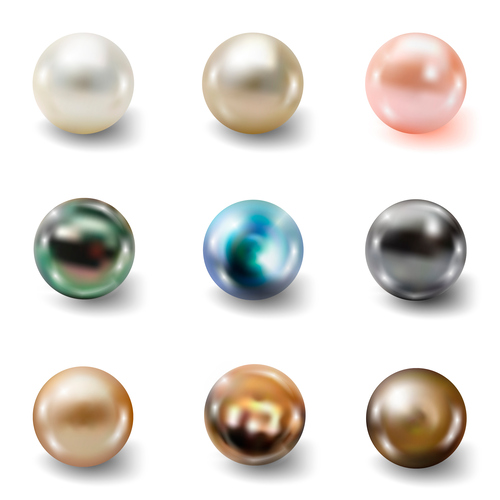
Tahitian Pearls
Tahitian pearls are considered to be the second most valuable variety of cultured pearl in the world, after South Sea pearls. Though they are sometimes called ‘black pearls,’ they come in a range of colors so broad it can be difficult to find enough matching Tahitian pearls to create a necklace.While other pearls may be treated to appear darker, Tahitian pearls come by their coloring naturally thanks to the black-lipped oysters which produce them. These oysters secrete an inky pigment which results in pearls that run a color spectrum from green to silver to deep black. They often have captivating iridescent overtones. Like South Sea pearls, Tahitian pearls also have a thick nacre which results in high luster.
Freshwater Pearls.
The most commonly produced variety of pearls, freshwater pearls are made by the oyster Hyriopsis cumingi (also known as the ‘triangle shell’ oyster.) They are farmed commercially in China, Japan, and the United States.Freshwater pearls offer a huge diversity of color, tone, shape and size. Lavender, pink and cream are common colorings for freshwater pearls. They may take years to form, but when you see the dazzling end result, you’ll realize that they’re worth the wait.
The History of Pearl Jewelry
Thanks to oysters’ broad geographical distribution, pearls have made a historical and cultural impact all over the world. It’s hard to know when pearls first made their way into human hands, since their discovery predates written history, but it’s believed they were first discovered by people foraging for food along the seashore.Quickly, pearls attained luxury status. As early as 2300 BC, they were presented as gifts to Chinese royalty and Roman nobility. They became so associated with elegance that Julius Caesar passed a law limiting the wearing of pearls to members of the ruling class. In the Persian Gulf, the pearl trade became a bustling industry, supporting early settlements.
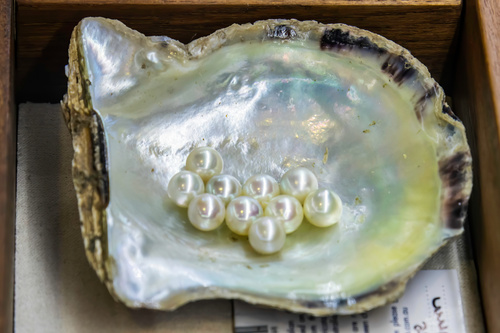
In 1893, the world’s first cultured pearl was created in Japan by Kokichi Mikimoto. His cultivated pearls revolutionized the market. Mikimoto could produce 10 million pearls per year, at attainable prices. As a result, in the early 20th century, pearls began trending among the general public
Pearls as Gifts
Versatile, naturally gorgeous, and steeped in history, pearls are a popular gift. Since they are traditional and timeless, they are given as gifts for many events, from baptisms to weddings to Mother’s Days. Also associated with purity and innocence, people often give pearls to younger loved ones as a ‘first’ piece of fine jewelry.Pearl Necklaces
The pearl necklace is the most common and classic pearl jewelry gift. Pearl necklaces come in many sizes and styles. The pearl pendant necklace features on pearl as the centerpiece, while the pearl strand necklace is made up of many pearls.Collars are the shortest of the pearl strands, and fall snugly on the mid-neck, while rope strands are the longest at over 45 inches in length. So, when picking a pearl gift, make sure you have an idea of the length your loved one would like best. Also consider the type of pearl that would suit their taste and current wardrobe, whether it’s the unique and multi-toned South Sea pearl or the shimmering round Akoya pearl.
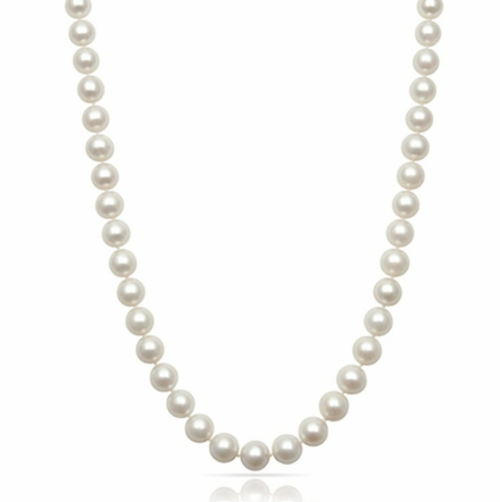
Pearl Drop Earrings
Pearl drop earrings are a classic and timeless accessory that can add a touch of elegance and sophistication to any outfit. The combination of the lustrous pearls and the dangling design creates a delicate and feminine look.Pearl earrings come in a variety of styles, including pearl studs, black pearl earrings, and pearl drop earrings. They can be dressed up for formal occasions or dressed down for casual outings. Pearls are also believed to have calming and soothing effects, making them a popular choice for special occasions.
Pearl Rings
Pearl rings are a stunning and thoughtful gift that can be cherished for years to come. The elegant and timeless look of pearls makes them a popular choice for special occasions such as weddings, anniversaries, or birthdays. A pearl ring can symbolize purity, wisdom, and tranquility, making it a meaningful gift for someone special.Pearl rings come in a variety of styles, from simple and classic designs to more intricate and unique pieces. They can be worn alone or paired with other rings to create a stylish and fashionable look. Overall, a pearl ring is a beautiful and thoughtful gift that can be treasured for a lifetime.
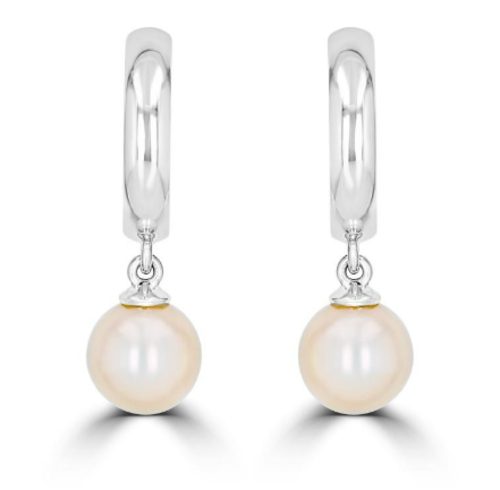
Pearls for Men
In recent years, there has been a noticeable rise in the number of men wearing jewelry. No longer a conventionally feminine accessory, men are experimenting with a wider variety of jewelry options, from simple and subtle pieces like leather bracelets or minimalistic rings, to more bold and statement-making pieces like thick chains.Pearls are a great way to capture and express personal style. We believe men can appreciate them just as much as women can! Whether you want to give a guy in your life some pearl jewelry or buy some for yourself, the most popular pieces of men’s pearl jewelry are pearl bracelets and pearl necklaces.
Men’s Pearl Bracelets
A pearl bracelet can add sleek style and sophistication to any man's outfit. They resemble bead bracelets, another popular style of jewelry for men (though they take things up a notch by using precious gemstones rather than beads). Men’s pearl bracelets could easily be mixed and matched with beads or chain bracelets for a curated look.Lean into the symbolism of the pearl, which is said to represent tranquility as well as purity. Give a pearl bracelet to that guy who could use a reminder to sit back and enjoy the flow of life.The smooth and cool feel of the pearls against the skin may also have a calming and soothing effect. For a guy who likes to take things up a notch, a men’s pearl bracelet makes a gift he can treasure for years to come.
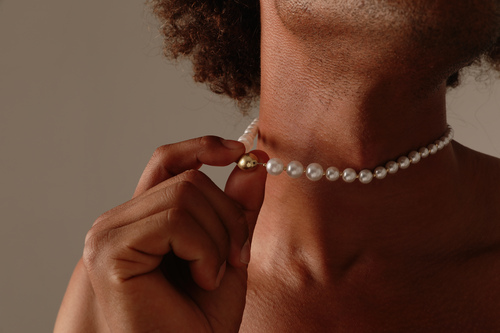
Men’s Pearl Necklaces
In late 2019, singer Harry Styles was spotted sporting a men’s pearl necklace. Since then, celebrities like rapper A$AP Rocky, singers Shawn Mendes and Pharrell Williams, and actors Billy Porter and Timothee Chalamet have been seen in pearl necklaces, too.It’s no wonder they’ve made such a splash on the men’s fashion scene–they pair perfectly with just about any look, whether it’s a red carpet ensemble or a casual weekend outfit. Men’s pearl necklaces are also ideal for layering with other accessories, including men’s chains. So if you know someone who’s looking to spice up his collection of links and stay ahead of the trends, you know someone who’d love the gift of a men’s pearl necklace.
Start Exploring the World Of Pearls at a Jewelry Store Near You
The journey of the pearl from oyster to jewelry case is a fascinating one. Their unique origins, rich history and rare beauty lend them a one-of-a-kind allure. A staple for any jewelry lover, pearls make a gorgeous, meaningful gift for anyone in your life.With Mother’s Day coming up, now is the perfect time to check out some potential pearl gifts for the number one woman in your life. Visit us online or stop by our Alabama jewelry stores for help picking out the perfect present!

